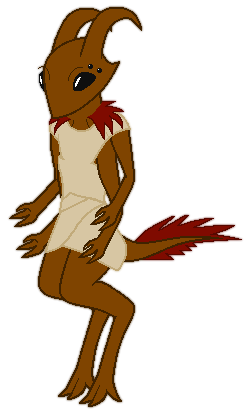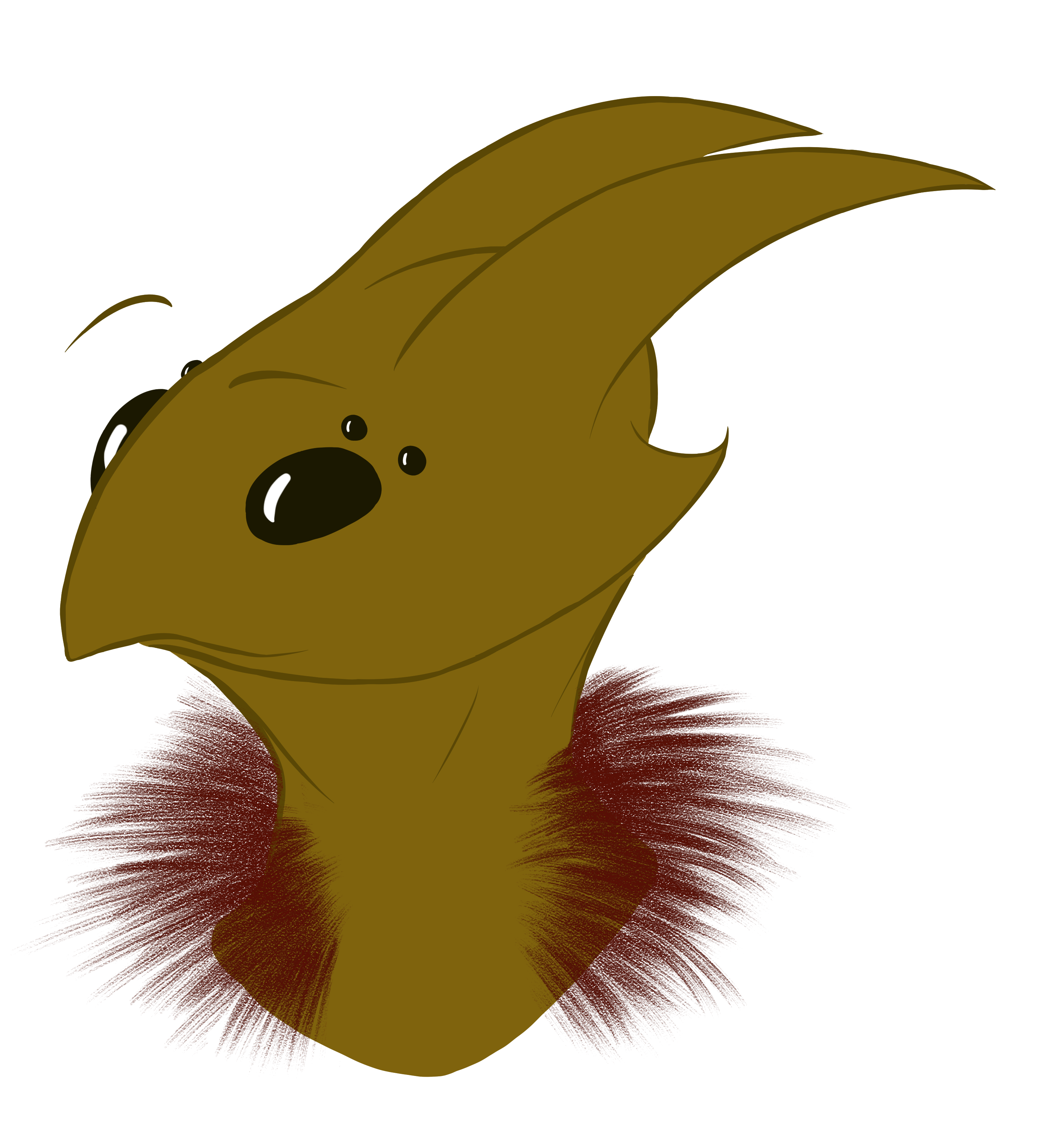Skgri
Biology
Anatomy & Morphology
Skgri'i were vertical bipedal hexapods, with two sets of manipulatory forelimbs on the sides of the upper torso and and a pair of digitigrade hindlimbs used for terrestrial locomotion. The lower section of the spine transitioned into a short tail with a large dorsal/ventral fin of fur-like pycnofibres, used as a balance mechanism while on the ground (with the fibres likely being a superficial display structure akin to human hair or shyxaure parafeather manes.)
Though somewhat insectoid in appearance, skgri'i were endoskeletal, with bones composed primarily of collagen and copper carbonate. Their vascular oxygen carrier was ferromanganase, a protein based on iron and manganese that turns a dark shade of umber when oxygenated.
Perception & Sensory Capabilities
Visual
Skgri'i had a total of six superfine-lensed compound eyes. The primary pair were largest and most sensitive to detail, able to detect well into the infrared; the two sets of secondary eyes were far smaller and simply attuned to motion and shades.Auditory
Skgri'i were also very sensitive to aural stimuli thanks to the pair of large, hornlike antennae atop their heads. These antennae were filled with statocystic fluid, and were actually quite flexible -it is believed that antenna movement was the main mechanism of emotional display in the species, though muscular structure above the primary eyes provided additional expression.Tactile
The skgri'i tactile sense was moderately strong. Their entire epidermis was sensitive to tactile input, though the effect was most intense in the manipulative structures at the ends of the upper limbs.Ecology
Geographic Origin & Distribution
Skgri'i relics have been found across a wide region of known space, centering on the planet Hemera in the Barnard's Star system. In the 23rd century CE, there was a prominent theory that Victoria or Vacuna was the original homeworld of the satyrs and their biosphere; this was debunked upon the discovery of fossils on Hemera.Habitat & Survival Factors
The optimal survival range in a variety of factors for an unequipped satyr is presumed to have been very wide, considering their homeworld's extreme climate gradient. However, they were quite a technologically advanced species, and were able to establish permanent presence in many ostensibly inhospitable locales.Archive Data
- visual (400 - 900 nm)
- auditory (16 Hz - 16 kHz)
- tactile (1 μm limit)
- olfactory
- Gamma: 0.36 Gy
- Beta: 0.08 Gy
- Alpha: 0.015 Gy





Comments